The territory of the "Settlement "Belozersky val" XVv."
The territory of the "Settlement "Belozersky Val"XV century." (an object of cultural heritage of federal significance)
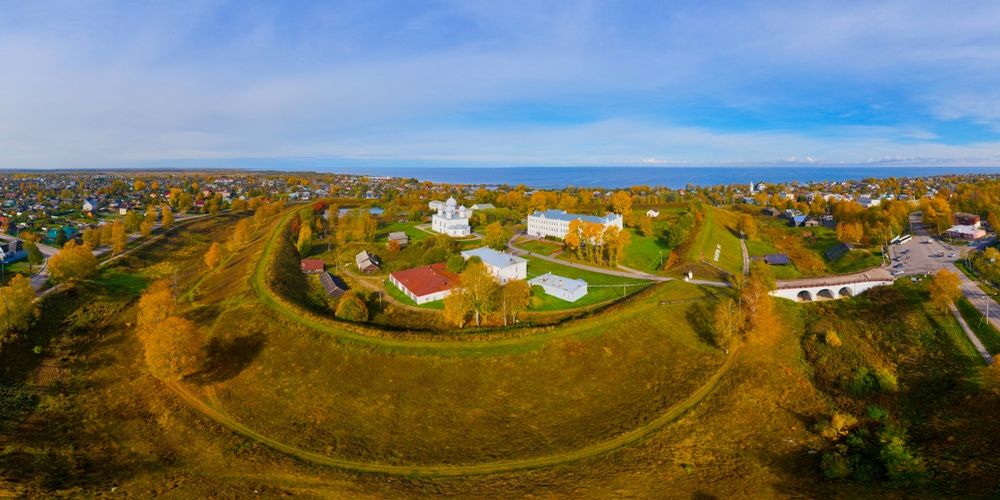
The Belozersky Kremlin is a unique monument of defense architecture of the late XV century. The ramparts were filled in under Grand Duke Ivan III (1462-1505), after the final transition of the Belozerye to Moscow. The city was to become another fortress on the northern borders of the country. In moments of great danger, the Grand ducal treasury was exported to Beloozero, and church hierarchs also left there. In the autumn of 1480, in BIHM 3259 - 8 n - in the Photo A. At the time of the famous "Standing on the Eel", Ivan III sent his wife Sophia with young children and the Grand ducal treasury to Beloozero.
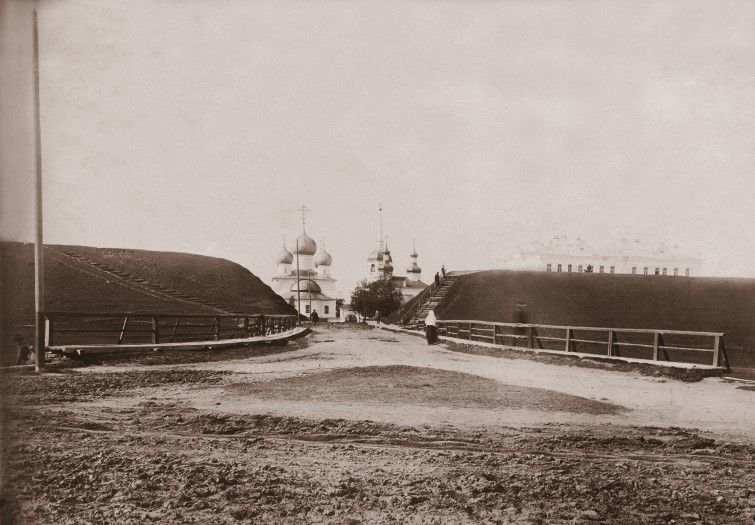
He sent confidants to accompany the most valuable things – the family and the treasury: boyar V.B. Tuchko–Morozov, okolnichy A.M. Pleshcheyev and clerk Vasily (Tretyak) Dolmatov. The victorious conclusion of the campaign ended with the recognition of the liberation of the Russian state from the Great Horde that had actually taken place.
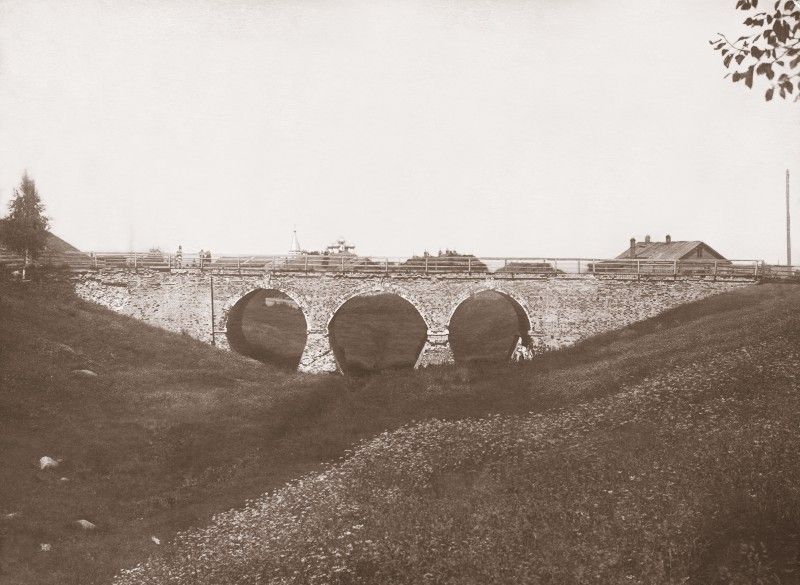
In 1485, Ivan III assumed the title of "Sovereign of All Russia", reflecting the sovereign essence of the strengthened Moscow Russia. In 1487, by his order, "on the Beleozer in Kargolom", a grandiose new fortress was built ten versts from the old town, as if symbolizing the unprecedented strengthening of the Russian BOKM 5841 - 1 Photo Bridge over the moat of the first half of the state.
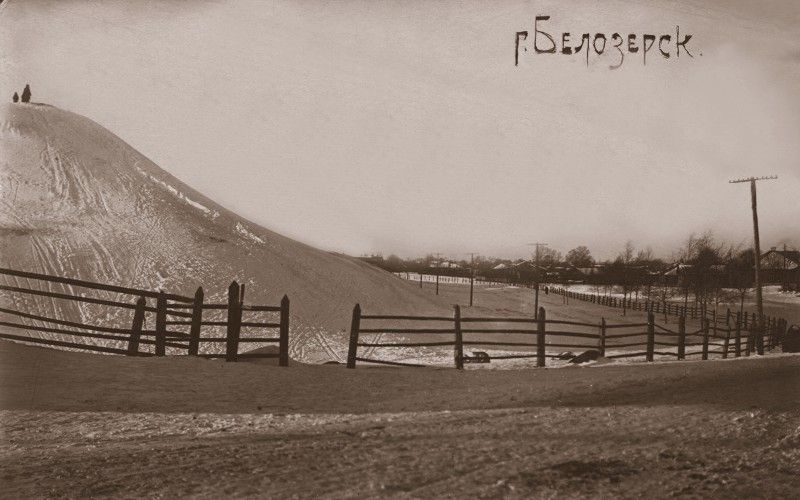
The remains of a powerful fortification in Belozersk are still impressive today: it is a closed earthen rampart with a length of about 1000 meters and a height of about 15 meters. The shaft is surrounded by a wide (up to 60 m) dry moat up to 7 meters deep. The fortress was characterized as a "chopped city", "chopped rash", because inside the shaft there are wooden chopped structures that keep the embankment from sliding and provide the shaft with the steepness and fortress necessary for defense. Outside, a narrow horizontal ring platform was left between the embankment of the shaft and the edge of the moat, designed to prevent the shaft from sliding into the moat (along it, bypassing the stone bridge, the entrance to the territory of BOKM 5841 - 4 Photo View of the shaft from the Ilyinsky side).half strength). The top of the shaft is flat, in places of blind towers, the extensions of the embankment in the form of rectangular platforms are clearly visible, and in place of three travel towers that stood at ground level, the shaft breaks. Earlier, a powerful wooden chopped wall with a fighting course, which had eight towers, ran along the top of the shaft. The quadrangular towers, which had two or three combat tiers, differed in design and purpose. Two towers were passable – "gate" (eastern Bogoslovskaya and northern Pokrovskaya, western Ilyinskaya-vorotnaya had gates, but was not used as a passageway), the remaining five were built impassable, "deaf" (Spasskaya, Ozadskaya, Ilyinskaya, Lugovaya, Petrovskaya). Wooden bridges led to the passing towers across the moat. Inside the fortress, several large ponds were dug along the rampart, BOKM 5841 - 11 Photo The slope of the rampart in the winter of 1920-1930, intended to accumulate water in case of a siege or extinguishing fires. Excess water was diverted out through pipes laid under the shaft.
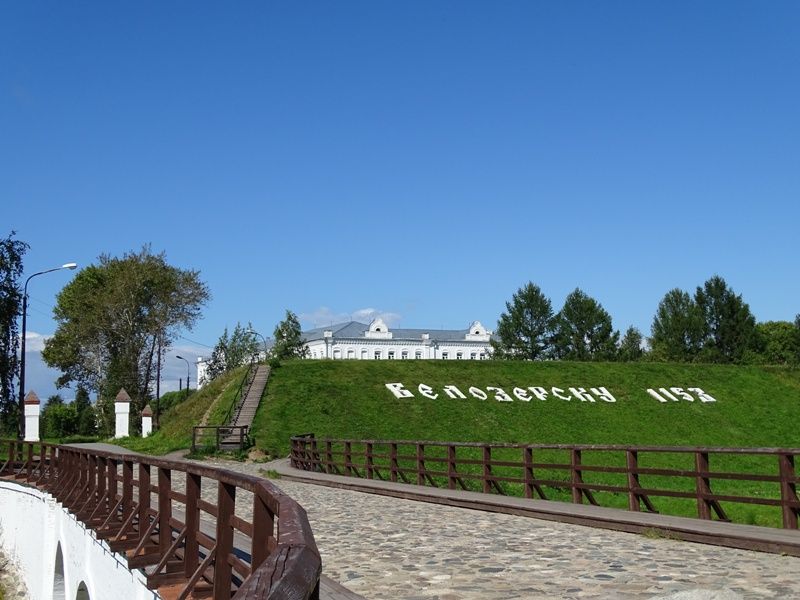
The territory inside the fortress was previously called the "city" itself. On the territory of the Kremlin, a cathedral wooden church was erected, consecrated in the name of Basil the Great, then a wooden cold Transfiguration Church is being built. There were numerous wooden buildings in the fortress: the voivodeship court, the command and gubernia huts, prisons, warehouses and "siege" courtyards. It housed a garrison, local government offices, courtyards of residents of different classes, conducted trade and stored supplies.
The presence of the fortress made it possible to use Beloozero as a place of imprisonment. This happened often. After the capture of Kazan by the troops of the Moscow Prince in 1487, Kazan Khan Alegam (Ilham) was exiled to Vologda, and his mother, brothers and sisters were sent to Beloozero. Also, in 1502-1508, the serving Tsarevich Abdul-Latif was imprisoned on Beloozer, who, sitting on the khan's throne in Kazan, tried to pursue a policy independent of Moscow. Prince Vasily Kholmsky, sent to help the garrison of Nizhny Novgorod besieged by the Kazan Tatars, stayed in Murom, where he spent time "piyahu and veselyahusya", for which he was captured and placed in prison on Beloozer in 1508, where he died 15 years later. In 1533-1535, Shah Ali (Shig-Aley), Khan of Kazan (later Tsar Kasimov) was imprisoned in Beloozer. There were other high-ranking prisoners, for example, the clerk Vasily (Tretyak), who brought the Grand ducal treasury to the same Beloozero Dolmatov and others. In the middle of the XVI century, during the Livonian War, captured "Germans" were also kept in the fortress. In the mid-1560s, a prominent military commander Prince Mikhail Ivanovich Vorotynsky and his family were exiled to Beloozero by order of Ivan IV the Terrible, and "the German prisons were taken out of the city." Two proxies from Ivan the Terrible were assigned to Vorotynsky "for protection", but apparently he was not in prison. The conditions of exile were relatively mild: the prince had a significant number of servants, a large sum was allocated for the maintenance of him and his servants – about 100 rubles. These money, however, were not always paid on time, and the prince, through the bailiffs, constantly "beat his forehead" to the sovereign that his and the princess's clothes "found fault" so that it was "inappropriate" to walk, and that "buckets of romanea" and "buckets of Renskov" of wine, lemons, pepper, cloves were not sent on time, fresh salmon and other things. This turn in the fate of the commander ended well, and soon he was released.
What was the plan of Ivan III, who ordered to build a huge Belozersky Kremlin in the same years when the existing Moscow Kremlin was being built? As we can see, already at the end of the XV century, Beloozero was far from the borders of Moscow Russia and, it would seem, could not be attacked by an external enemy? Apparently, the Italian nobleman Alexander Gwagnini, who was in the service of the Polish king, correctly assessed the significance of this structure, who in his essay "Description of Muscovy", published in 1578, characterizes Beloozero with the grandson of Ivan III, Tsar Ivan the Terrible: "On this lake there is an impregnable Kremlin, fortified by nature itself, in which the sovereign of Muscovy usually he hides his treasures and runs here as if to a shelter, when enemies invade. Beloozero is a hundred miles from Muscovy and just as far from Novgorod the Great. The area of the bridges is almost entirely covered with swamps and forests, and access to it is not easy and inconvenient for travelers, unless bridges are built or water is frozen."Indeed, the fortress-shelter, the fortress-treasury, the fortress-symbol and the fortress-prison – all these meanings were inherent in the Belozersk Kremlin during the first centuries of its existence.
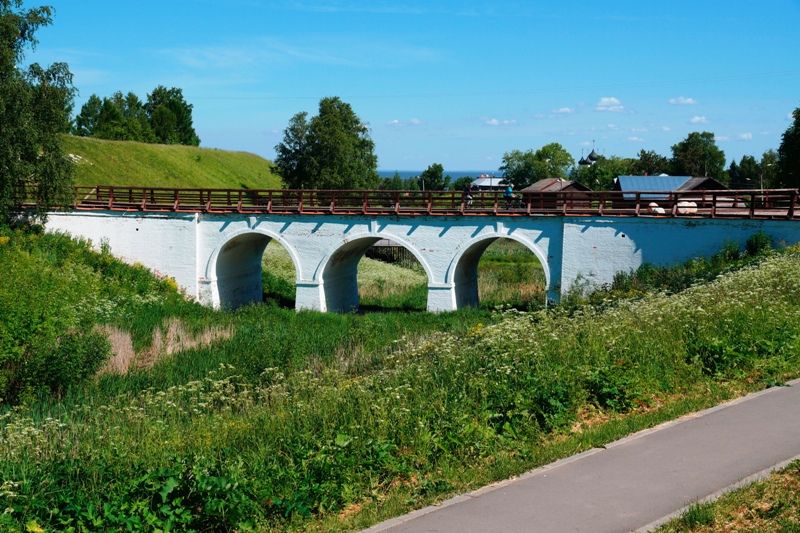
Already in the middle of the XVI century, the wooden fortress fell into a deplorable state. "The city, my lord, is thin, has collapsed," the bailiffs informed Ivan the Terrible. If in the XVI and XVII centuries the wooden fortress was repaired more than once, then later, in the XVIII century, the dilapidated walls and towers were dismantled as unnecessary.
Currently, in terms of size and preservation, the Belozersky Kremlin is one of the best monuments of this kind in northern Europe.
